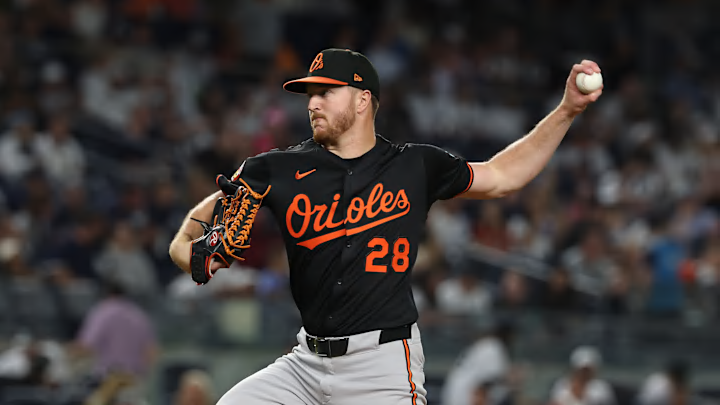If you’re grading the 2025 Baltimore Orioles on vibes alone, it felt like a year that never quite got out of the first gear. The rotation was a revolving door, the IL looked like a spring training roster, and every promising stretch seemed to be followed by another rough patch.
That’s how a good team can still deliver a season that feels, frankly, lost. But even in a muddled year, the sport has a way of revealing something useful, a piece you can carry forward. For Baltimore, that piece was a left-hander who arrived with questions and finished with answers.
Trevor Rogers started the season on the injured list after a right knee subluxation and spent April and most of May rebuilding his base in the minors. The acquisition from Miami was easy to frame as a flyer — buy-low talent, see-what-sticks depth.
Instead, his late-May debut set off a steady, month-over-month climb from “healthy” to “reliable” to “tone-setter.” By the time the calendar flipped to July, he looked less like a back-end patch and more like the guy you hand the ball to when you need a series to settle down.
Trevor Rogers turned a lost Orioles season into a 2026 rotation clue
From July 1, through the end of the season, Rogers carved out a 1.75 ERA, the kind of sustained dominance that forces its way into a team’s 2026 planning. It wasn’t smoke and mirrors; it was strike-one conviction, a fastball that played at the top of the zone, and the trademark changeup keeping hitters honest and off-barrel. He lived in advantage counts, limited free passes, and let the defense work. The box scores told one story; the rhythm of his outings told another — calm, repeatable, economical.
Context matters, and Rogers’ steadiness mattered even more because of what was happening around him. Grayson Rodriguez and Kyle Bradish spent majority of the year in various stages of recovery, and while Dean Kremer gave Baltimore innings, a 4.19 ERA over 31 starts didn’t exactly scream “leap made.”
It’s a beautiful day in this neighborhood 🏠
— Baltimore Orioles (@Orioles) September 23, 2025
Trevor Rogers is our 2025 Most Valuable Oriole! pic.twitter.com/7H9tLt6ev9
The list of failed pitching experiments could go on for a while, but the point is, Rogers filled the void those realities created. And if anyone needed a reminder that this wasn’t a bolt from the blue, note the track record: the 27-year-old is a former All-Star who posted a 2.64 ERA over 25 starts as the 2021 NL Rookie of the Year runner-up to Jonathan India. He wasn’t reborn, he was restored.
The larger lesson here is about roster architecture. Rogers’ emergence gives the Orioles a different kind of floor going into 2026. Slot a healthy Rodriguez and Bradish alongside him, and suddenly everyone’s asked to do just a little less, which is how staffs get deeper and bullpens stop yo-yoing.
One more silver lining and honorable mention: outfielder Dylan Beavers announced himself as a viable big-league bat. In 137 plate appearances, he slashed .227/.375/.400 with four homers, 14 RBI, and a 120 OPS+, showing mature zone control and just enough thump to force his way into next spring’s picture. The average can climb with reps, but the on-base skill is already a bankable trait — exactly the kind of complementary offense that lengthens a lineup without a major payroll outlay.
DYLAN BEAVERS FIRST CAREER WALK-OFF!! pic.twitter.com/Vzhyi2Xy9T
— Baltimore Orioles (@Orioles) September 11, 2025
The 2025 Orioles won’t hang in any museum, and that’s okay. Seasons like this are about inventory: what failed, what translates, and what’s worth betting on when the standings reset. Rogers transformed from question to answer, from depth piece to dependable starter, and Baltimore’s path back to relevance in 2026 is clearer because of it.
